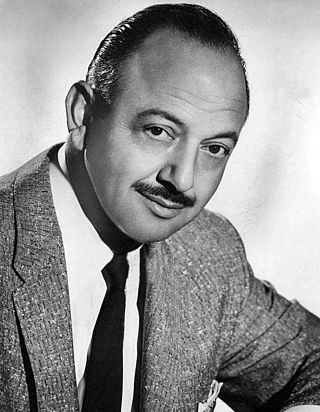
Melvin Jerome Blanc was an American voice actor and radio personality whose career spanned over 60 years. During the Golden Age of Radio, he provided character voices and vocal sound effects for comedy radio programs, including those of Jack Benny, Abbott and Costello, Burns and Allen, The Great Gildersleeve, Judy Canova, and his own short-lived sitcom.

Inki is the lead character in an animated cartoon series of Warner Bros. Looney Tunes and Merrie Melodies short films by animator Chuck Jones. Five Inki cartoons were made between 1939 and 1950.
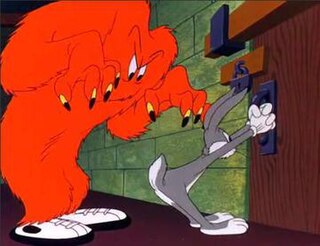
Gossamer is an animated character in the Warner Bros. Looney Tunes and Merrie Melodies series of cartoons. He is a large, hairy, orange or red monster. His body is perched on two giant tennis shoes, and his heart-shaped face is composed of only two oval eyes and a wide mouth, with two hulking arms ending in dirty, clawed fingers. The monster's main trait is his uncombed, orange hair. He originally was voiced by Mel Blanc and has been voiced by Frank Welker, Maurice LaMarche, Joe Alaskey, Jim Cummings, Kwesi Boakye, Eric Bauza and currently Fred Tatasciore.

Gerardo Luigi Colonna, better known as Jerry Colonna, was an American musician, actor, comedian, singer, songwriter and trombonist who played the zaniest of Bob Hope's sidekicks in Hope's popular radio shows and films of the 1940s and 1950s. He also voiced the March Hare in Walt Disney's 1951 animated feature film Alice in Wonderland.
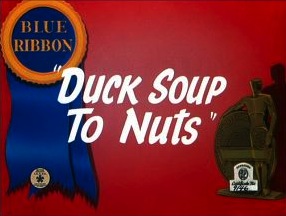
Duck Soup to Nuts is a 1944 Warner Bros. Looney Tunes cartoon directed by Friz Freleng. The cartoon was released on May 27, 1944, and stars Daffy Duck and Porky Pig.

The Bugs Bunny/Road Runner Movie is a 1979 American animated comedy package film directed by Chuck Jones, consisting of a compilation of classic Looney Tunes/Merrie Melodies shorts and newly animated bridging sequences hosted by Bugs Bunny. The bridging sequences, which had been produced in 1978, show Bugs at his home, which is cantilevered over a carrot-juice waterfall. The film was released to celebrate the 40th anniversary of Bugs Bunny.

Jack Lescoulie was a radio and television announcer and host, notably on NBC's Today during the 1950s and 1960s; a newspaper source lists his date of birth as May 17, 1912. Lescoulie was also known for his voice impersonation of comedian Jack Benny.
Beanstalk Bunny is a 1955 Warner Bros. Merrie Melodies cartoon directed by Chuck Jones. The short was released on February 12, 1955, and stars Bugs Bunny, Daffy Duck and Elmer Fudd. The cartoon's story is derived from the fairy tale "Jack and the Beanstalk".

A Pest in the House is a Merrie Melodies animated short film released on August 2, 1947. It is directed by Chuck Jones and stars the characters of Daffy Duck and Elmer Fudd.

Birth of a Notion is a 1947 Warner Bros. Looney Tunes cartoon directed by Bob Clampett and Robert McKimson. The cartoon was released on April 12, 1947, and stars Daffy Duck.
Hollywood Daffy is a 1946 Warner Bros. Merrie Melodies cartoon, starring Daffy Duck. The cartoon was written by Michael Maltese and was released on June 22, 1946.

A Star Is Bored is a 1956 Warner Bros. Looney Tunes cartoon, directed by Friz Freleng. The short was released on September 15, 1956, and stars Bugs Bunny and Daffy Duck. The cartoon expands upon the rivalry depicted between Bugs and Daffy, in such films as Chuck Jones' 1951 short Rabbit Fire, this time placing the action in a show-biz setting. In this 7-minute short, Daffy must double for Bugs in any slapstick that Warners deems too dangerous for its top star. After each disaster, Daffy shouts "MAKEUP!". The director directing the scenes has an Erich Von Stroheim accent.
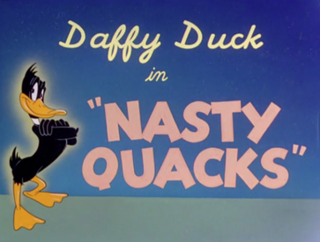
Nasty Quacks is a Warner Bros. Merrie Melodies cartoon directed by Frank Tashlin, released on December 1, 1945, and starring Daffy Duck.

You Were Never Duckier is a 1948 Warner Bros. Merrie Melodies cartoon directed by Chuck Jones. The cartoon was released on August 7, 1948, and stars Daffy Duck and Henery Hawk.
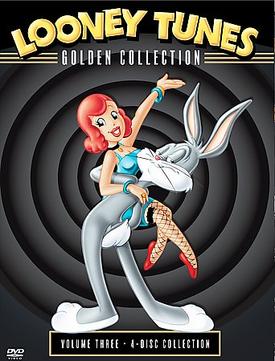
Looney Tunes Golden Collection: Volume 3 is a DVD box set from Warner Home Video that was released on October 25, 2005. It contains 60 Looney Tunes and Merrie Melodies theatrical short subject cartoons, nine documentaries, 32 commentary tracks from animators and historians, 11 "vintage treasures from the vault", and 11 music-only or music-and-sound-effects audio tracks.
Quack Shot is a 1954 American animated comedy short film directed by Robert McKimson. The cartoon was released on October 30, 1954 as part of the Merrie Melodies series, and stars Daffy Duck and Elmer Fudd.
Buddy's Lost World is a 1935 Warner Bros. Looney Tunes cartoon, directed by Jack King. The short was released on May 18, 1935, and stars Buddy, the second star of the series.
Wise Quackers is a 1949 Warner Bros. Looney Tunes cartoon directed by Friz Freleng. The film was released on January 1, 1949, and stars Daffy Duck and Elmer Fudd.
Malibu Beach Party is a 1940 Warner Bros. Merrie Melodies cartoon directed by Friz Freleng. The short was released on September 14, 1940.













